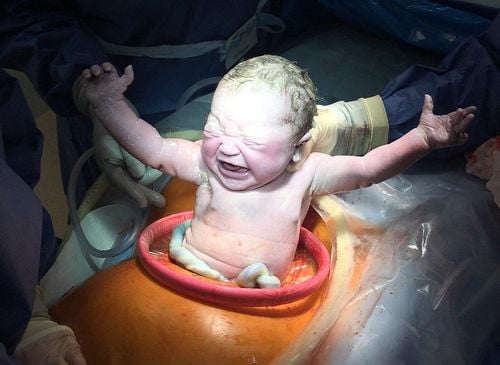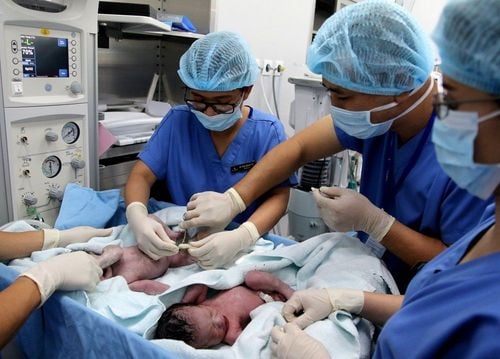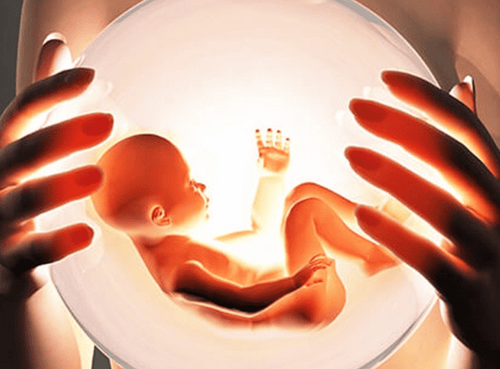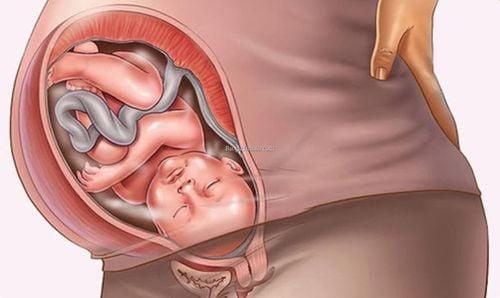This is an automatically translated article.
The article was professionally consulted by Specialist Doctor I Le Hong Lien - Department of Obstetrics and Gynecology - Vinmec Central Park International General Hospital. Doctor Lien has over 10 years of experience as a radiologist in the Department of Ultrasound at the leading hospital in the field of obstetrics and gynecology in the South - Tu Du Hospital.
The fetal position is one of the determining factors in the choice of birth method for pregnant women who have given birth. Determining the fetal position is very important in the last weeks of pregnancy or a few days before delivery.
1. What is the throne? What types of thrones are there?
The fetal position is the lowest part of the fetus' presentation before the mother's pelvis to the birth canal and out of the mother's body first. Depending on the movement of the fetus, the position of the fetal position will be different.
The position of the fetus under 24 weeks often rotates regularly in the uterine cavity called the mobile position. The larger the fetus, the less rotation of the position, the better the alignment of the fetal position to prepare for labor.
Normally, there will be 2 main types of pregnancy:
Vertical position: Including the head (forward) and butt (reverse) position.
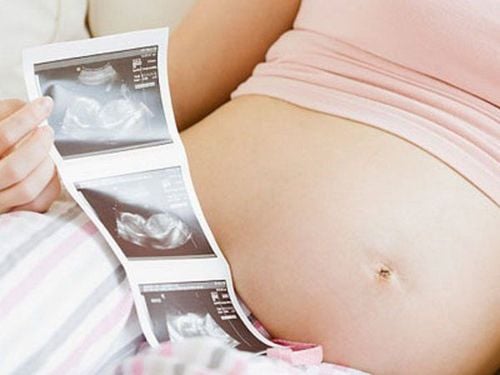
So what are the unique characteristics and possible situations with each type of fetal position?
2. The first position
The first position is also known as the favorable position. The head of the fetus is towards the mother's vulva, the nape of the fetus is turned toward the abdomen, and the bottom of the fetus is towards the mother's chest. When the pregnant mother has the fetus in the right position, the birth will be easier. Because during labor, the fetus will put pressure on the uterine cavity, causing the uterine cavity to expand. From there appear contractions that create natural pushing.
During labor, the baby's head will come out of the vulva first, the baby's limbs will fall back, it will be more compact and it will be more convenient to take the baby out of the womb.
Depending on the degree of bowing or back of the fetus's head, in the favorable position, it is also divided into 4 forms: the crown position, the anterior fontanelle position, the forehead position and the face position.
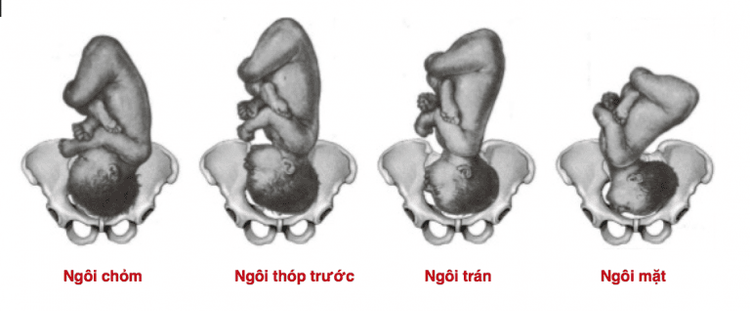
3. Butt throne (inverted throne)
The breech is a vertical position where the baby's head is above the chest, and the baby's bottom is towards the bottom of the mother's pelvis. The breech position is a position that can give birth to the bottom line, but it is easy to get the rear end because the baby's bottom and legs will go out of the mother's body first, and the head will come back. The breech pregnancy poses a very high risk to both mother and baby, which can be fatal to the fetus and increase the risk of complications for the mother.
The buttock is divided into 2 types:
Full buttock : That is, the buttocks and 2 legs present in front of the upper waist. When the baby is born, the bottom of the baby will come out first, the baby is in a sitting position, the knees are bent, the thighs are bent inward. This is the most common position of the breech position. Incomplete breech (also known as the lack of breech) with 3 types are: Buttocks: During labor, the buttocks will come out first, the baby is in the position of straightening the legs above the head. Knee and foot type: Your baby's legs will come out first because they're lower than the bottom.

4. Horizontal throne
The horizontal position, also known as the shoulder or the oblique position. This is a condition in which the fetal position is not along the longitudinal axis, but horizontal. With the shoulder, head and rump of the fetus are not always equal, one pole will be in the pelvis and the other will be in the lower ribs.
When labor begins, the shoulder will present to the mother's waist. The landmark of the shoulder is the apex. The transverse position is the abnormal position of the fetus, unable to give birth normally, so there is no delivery mechanism, it is mandatory to have a caesarean section.
This type of pregnancy is dangerous for both mother and baby. Pregnant women when diagnosed with shoulder position should be actively monitored in the last 3 months of pregnancy. Pregnant women need to rest in the last month to avoid premature rupture of membranes causing death to the fetus.
When the fetus is full term, it is necessary to take the initiative to get pregnant immediately to prevent dangerous complications for both mother and child such as rupture of membranes, placental cord prolapse, hand prolapse.
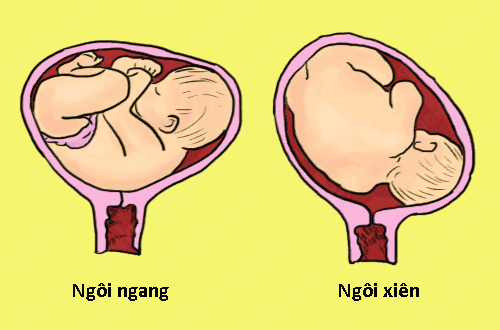
The position of the fetus is very important in predicting a vaginal birth or a caesarean section. There are many cases where the fetus is in the right position, but it is not possible to have a normal birth due to many reasons. Therefore, regular antenatal check-ups at the end of pregnancy are very important.
Currently at the International General Hospital, there are maternity packages with many advantages such as: Mother and baby are fully tested and screened before birth. Experienced team of doctors and nurses. Modern equipment, quiet and sterilized disease prevention system.... This is the smart choice of modern pregnant mothers to make the journey of "birthing" become lighter.
Please dial HOTLINE for more information or register for an appointment HERE. Download MyVinmec app to make appointments faster and to manage your bookings easily.





